On south-eastern slopes of Clear Mountain is a forest of various eucalypts and Brushbox (Lophostemon confertus). The understorey is dominated by Grass Trees (Xanthorrhea latifolia), some of which have trunks, while others grow low to the ground.
We bought our piece of bush in 1985. There was a dirt road, no house, water or power. A vague track on a grassy ridge led to a suitable site for a house. In the first year we had picnics on the land and even camped overnight before we finally decided to build a house. On one of these occasions, we discovered that someone had chopped down some of our trees along the track. Fortunately they survived and grew four trunks rather than just the one, now reaching at least 15 metres tall.
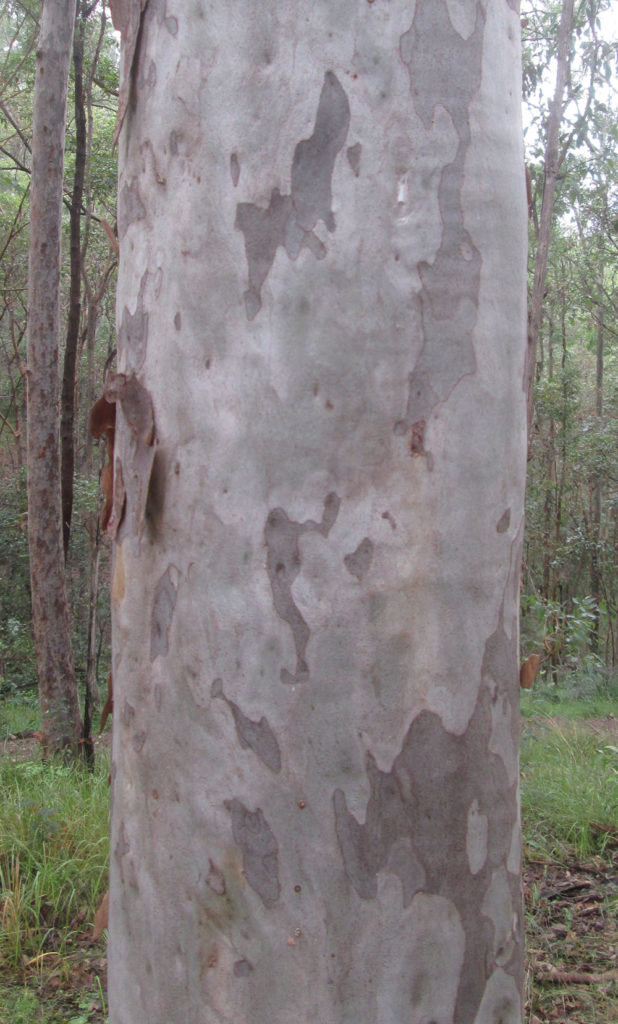
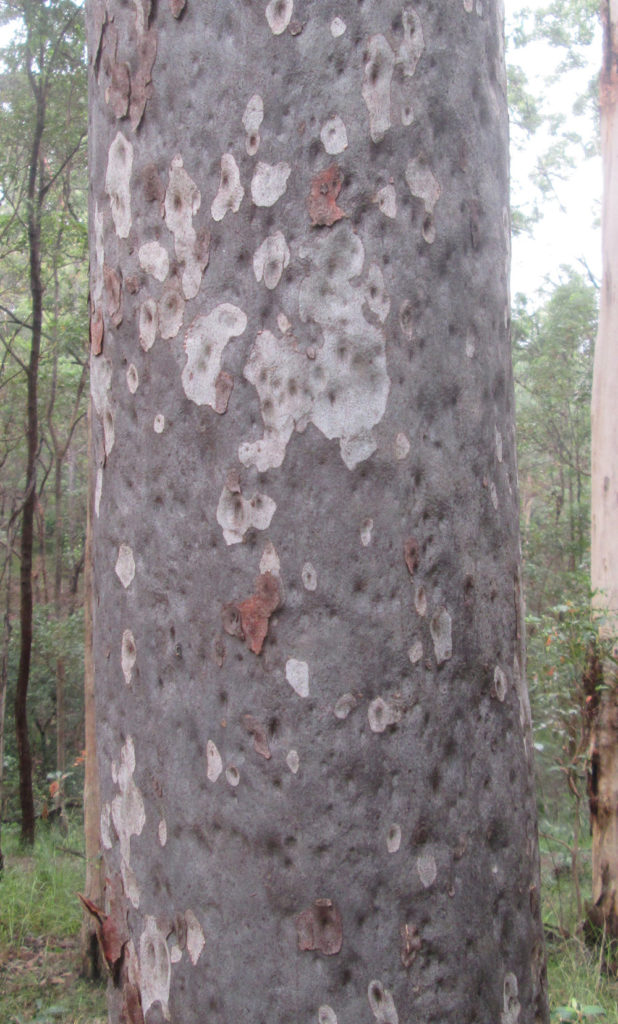
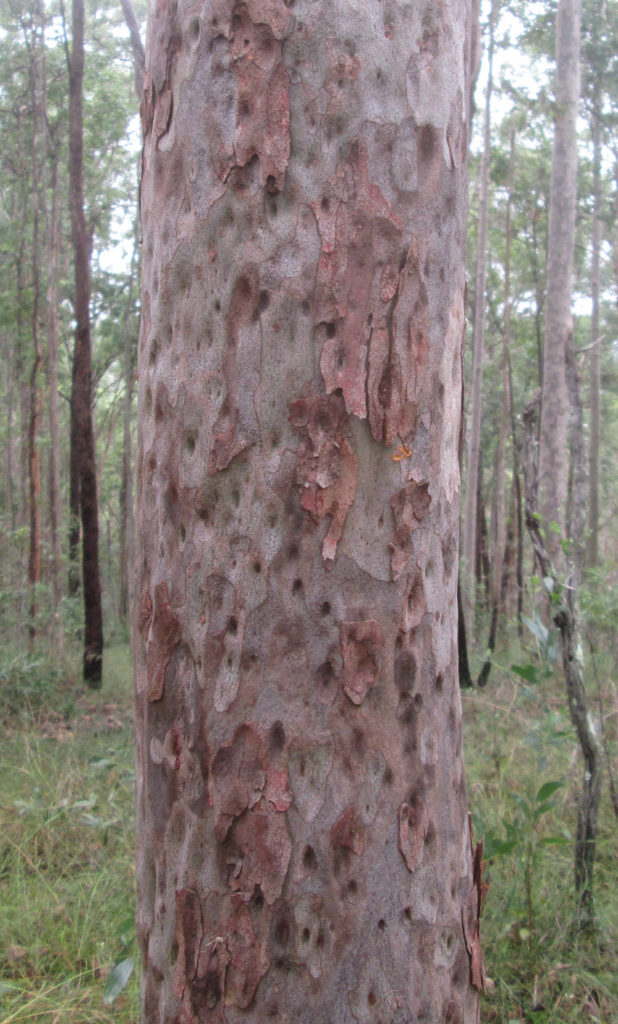
On another occasion, a picnic with friends was nearly cancelled because the bush was black from a fire which had burnt the understorey and revealed a couple of rubbish piles of old cans and bottles. In later years we would conduct several hazard reduction burns on our property in conjunction with the local Rural Fire Brigade.
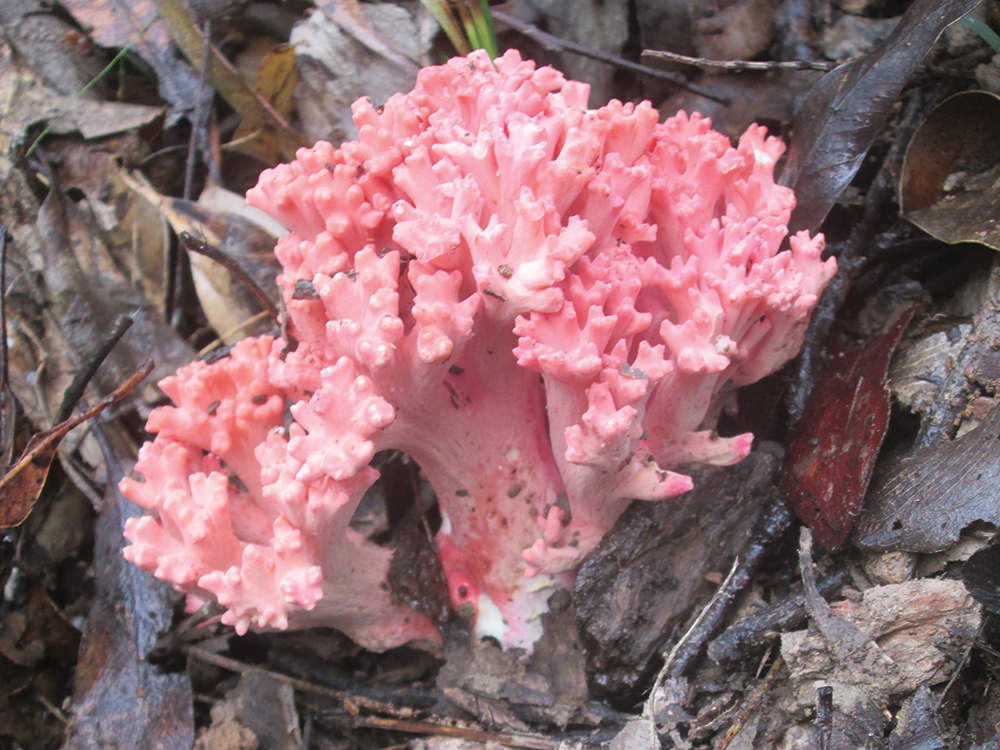
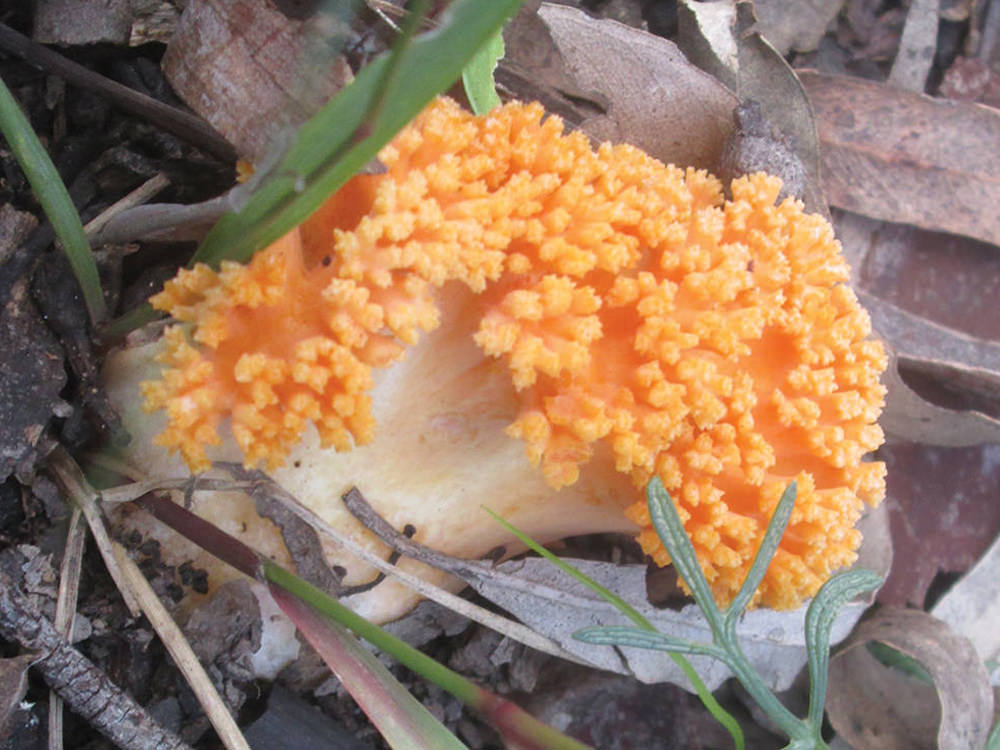
We were fortunate that only a few large trees had to be removed to build our home. We decided to install solar power rather than clearing a ten metre path across our property to wire in to the grid via our nearest neighbours. Once we lived at Clear Mountain, we were able to explore and enjoy our bit of bush, and its wildlife of wallabies, goannas, Koalas, echidnas, and antechinus.
We have also shared our garden produce with possums, bush rats and melomys. There are many birds to see – wrens, honeyeaters, kookaburras, parrots, raptors and owls to name a few. We have seen and heard Powerful Owls, and White-Throated Nightjars have bred in the bush near our house on several occasions.
There are many different habitats within the nine hectare block. Eucalypt forest lines the ridges, dominated by Spotted Gum (Corymbia citriodora subsp. variegata). There are also abundant Stringybarks, such as Tallowwood (Eucalyptus microcorys) and White Mahogany (Eucalyptus acmenoides), for which our property was named (‘Gunderlong’ means place of many mahogany trees).
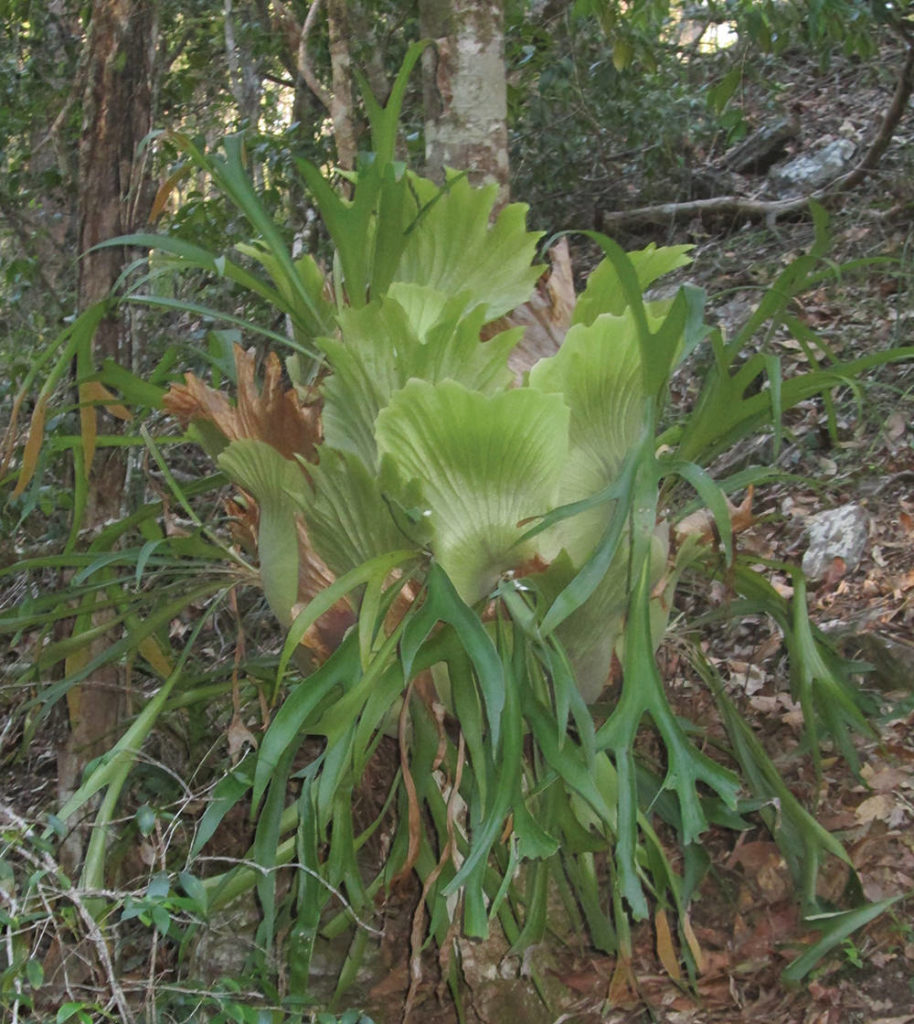
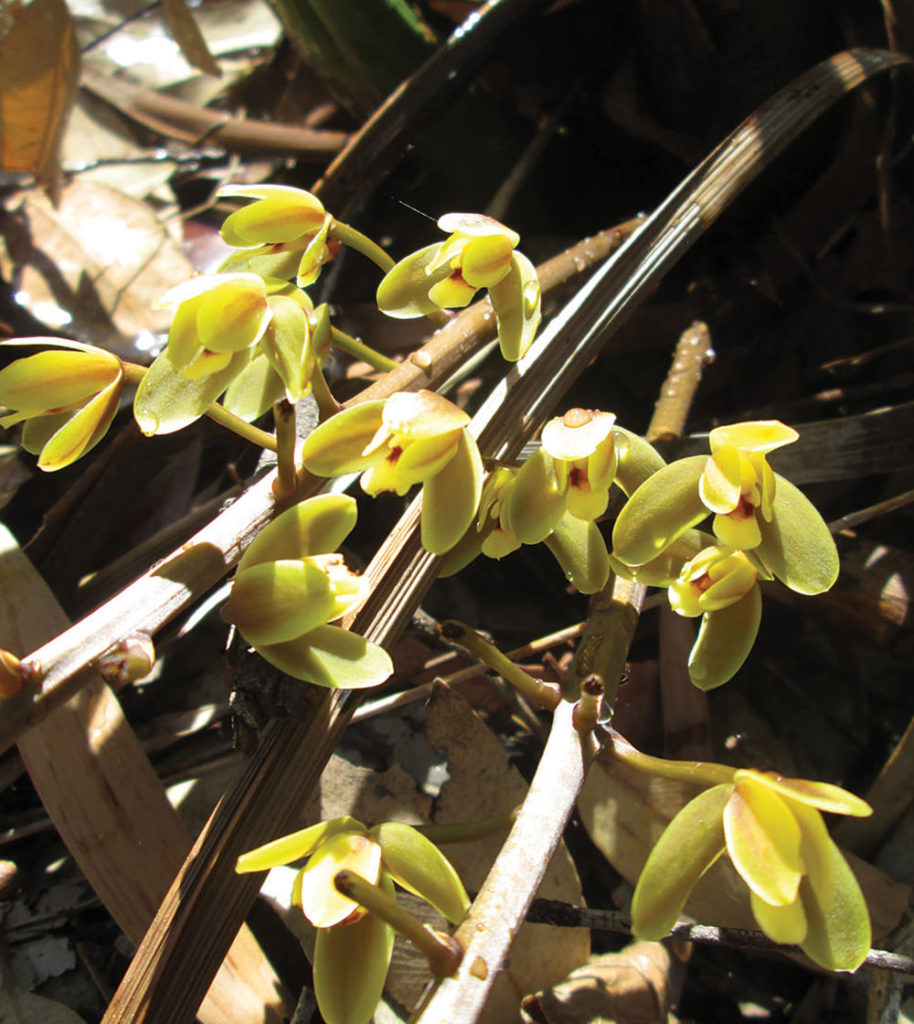
Grey Gums (Eucalyptus propinqua) and Ironbarks (e.g. Eucalyptus crebra) can be seen in abundance. There are also some Bloodwood (Corymbia intermedia) trees.
The ephemeral creek that makes its way across our property is lined by many rainforest species such as Lilly Pillies (Acmena smithii), Plum Myrtles (Pilidiostigma rhytispermum), Glossy Acronychia (Acronychia laevis) trees, Tree Heath (Trochocarpa laurina), Muttonwood (Myrsine variabilis), Lomandras (Lomandra longifolia) and Barbed-wire Vine (Smilax australis). A short distance from the gully there are often many Purple Pea Bushes (Hovea acutifolia) which are beautiful when in flower.
In 2015 we joined the Land for Wildlife program and the two Council Environment Officers who walked much of the land were impressed and asked why we had not applied to join before. Life was busy with other things until then!
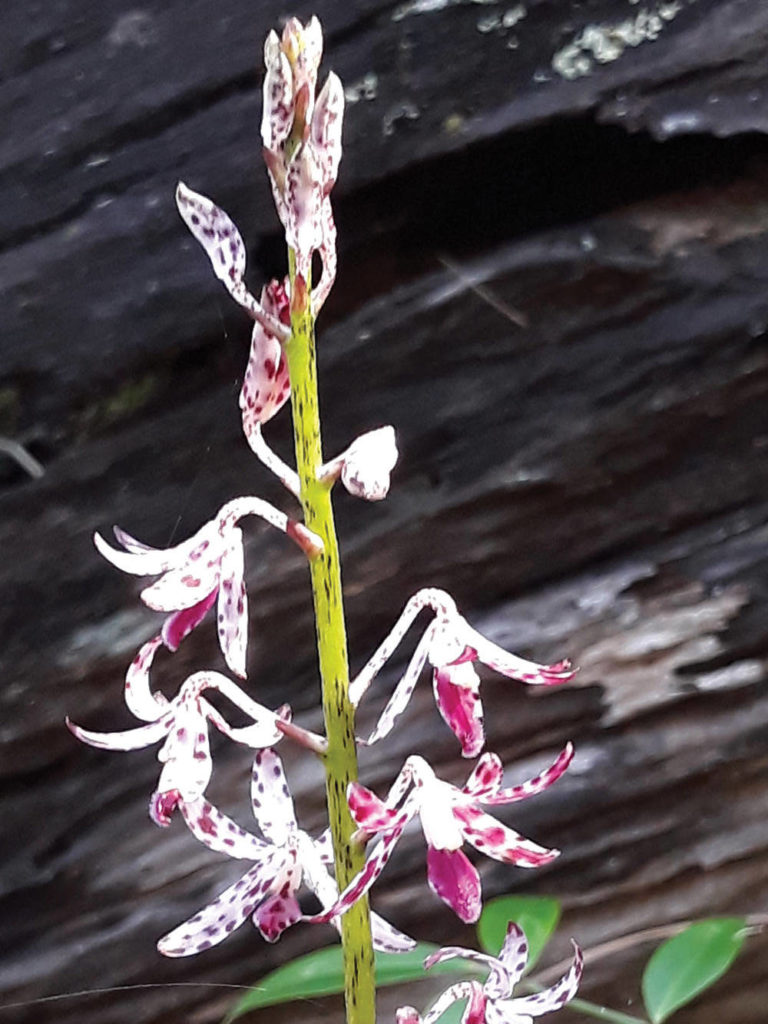
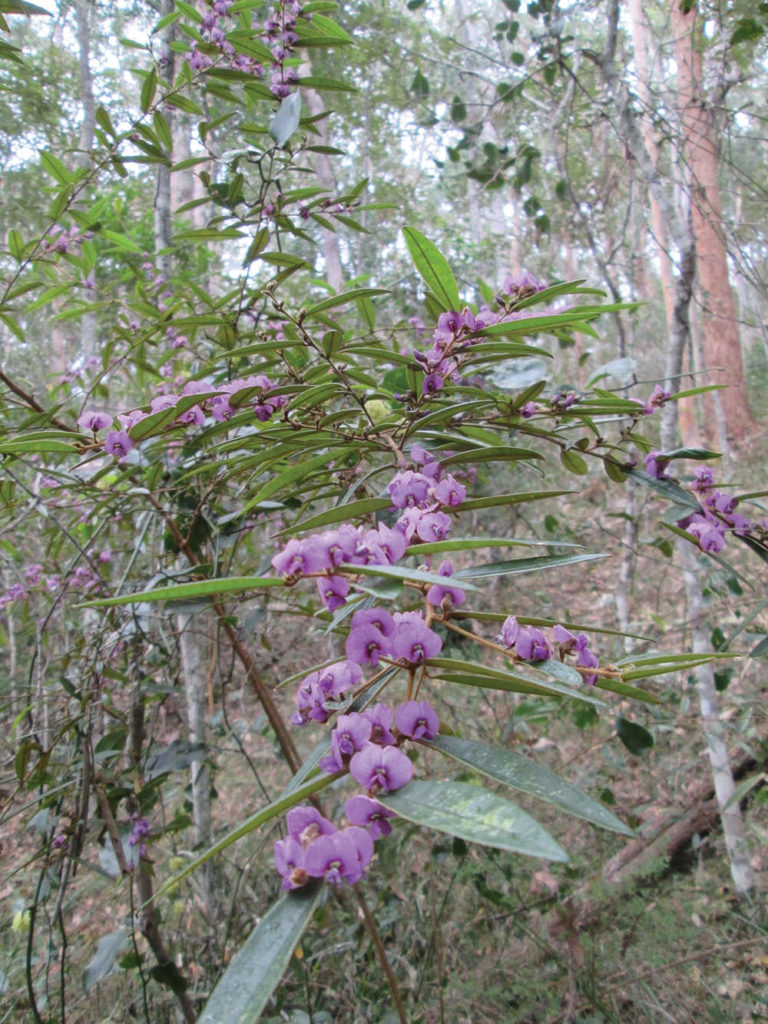
The weeds on the property were mainly Lantana and Corky Passionfruit as well as a large patch of Fishbone Ferns. Fortunately the Lantana was usually in clumps rather than vast areas so these were mostly pulled out by hand. On the rare occasion when they were on very steep hillsides, we used the cut and paint method with herbicide. On the northern border many kinds of weeds encroach our neighbour’s uphill property. These are slowly being dealt with by hand weeding and by planting natives to compete with the weeds.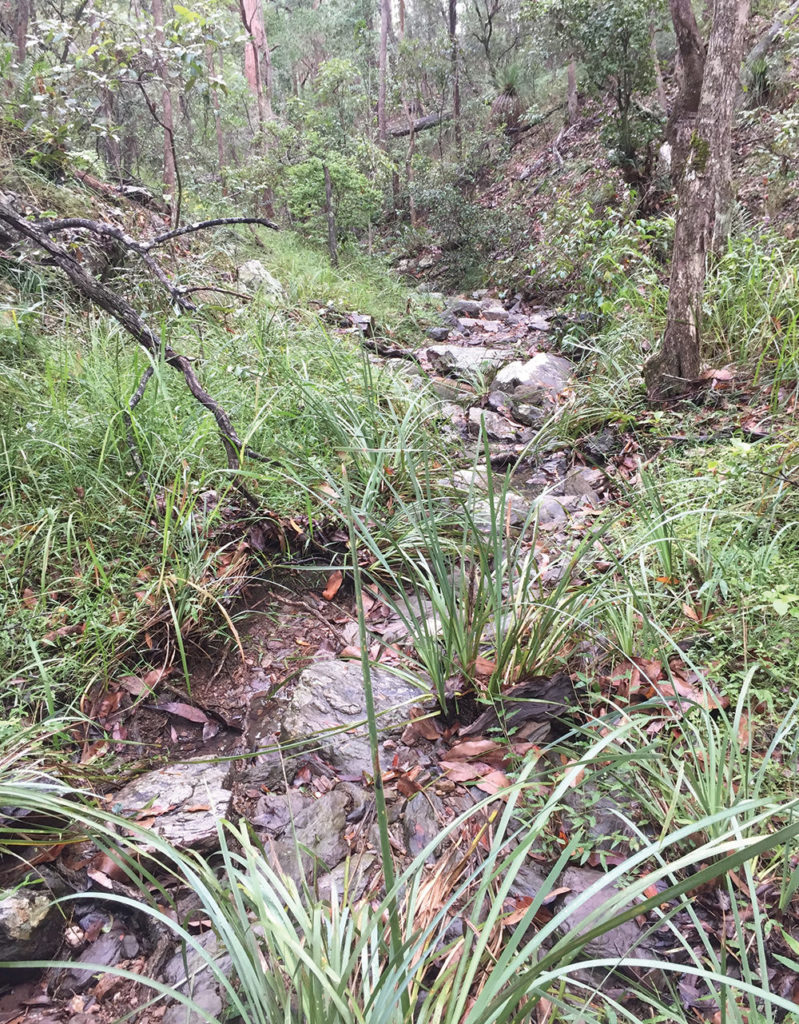
In late 2020 we decided to apply for a large part of our property (about six hectares) to be protected under a Moreton Bay Regional Council’s Voluntary Conservation Agreement (VCA). In early 2021 we were successful and were presented with our Voluntary Conservation Agreement sign. This area is now protected in perpetuity, with a conservation covenant. This means that there is now a protected corridor for wildlife between the Council’s Dobson Rd Reserve on our western border to the Clear Mountain Conservation Park across the road on our eastern border.
Having achieved much of what we set out to do regarding the conservation of our land by way of a covenant on the title deed, we came to the realisation that maintaining our acreage and house would soon become too onerous at our age. We were unsure how easy it would be to sell with the covenant restrictions.
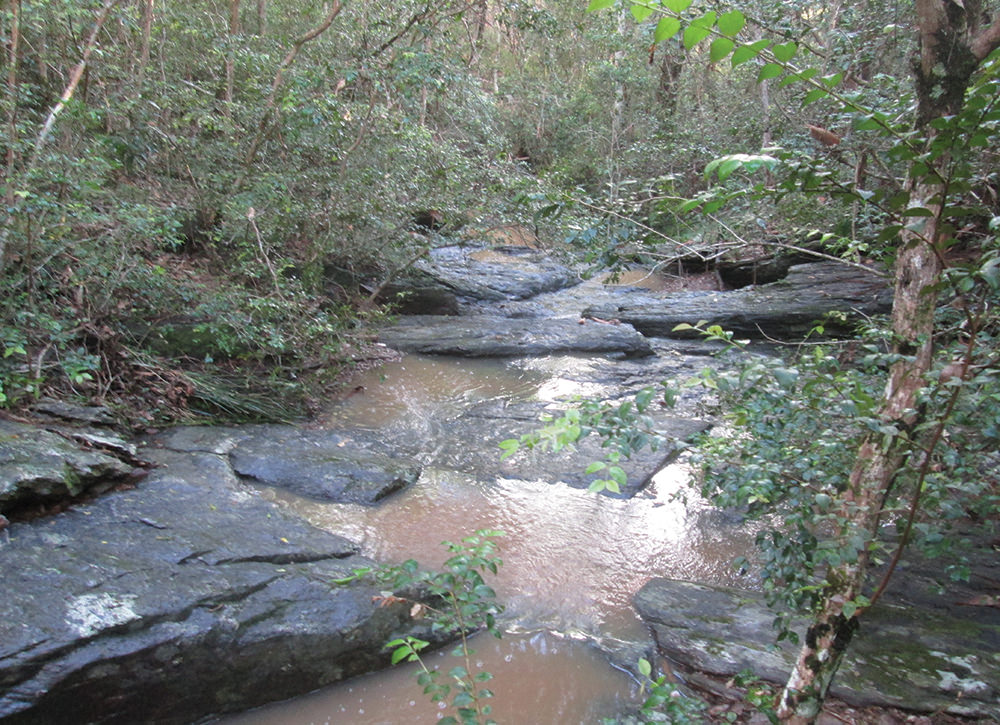
Fortunately for us and the land, a family with similar interests in preservation of the land’s values has bought the property. To them, the existence and conditions of the VCA agreement were very important in making their decision to purchase.
Article by Jan Blok and Dennis Arnold
Former Land for Wildlife members
Clear Mountain, Moreton Bay
